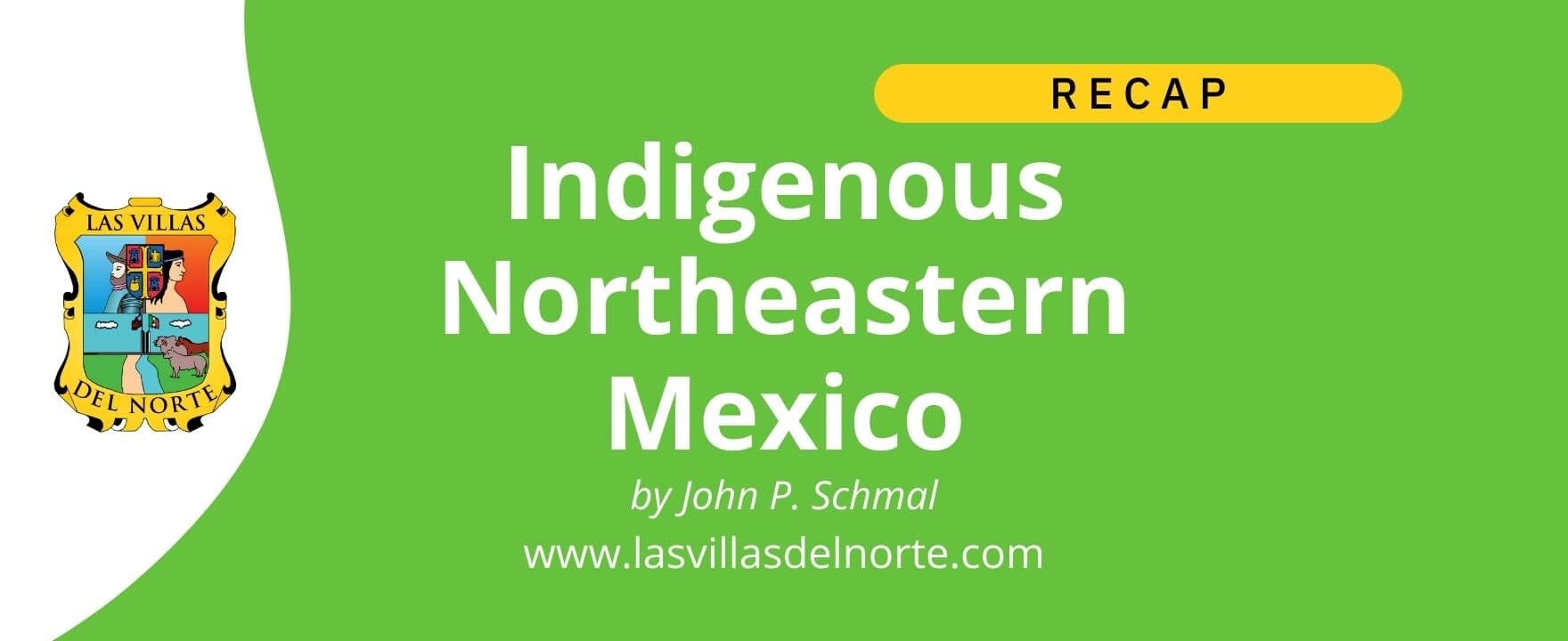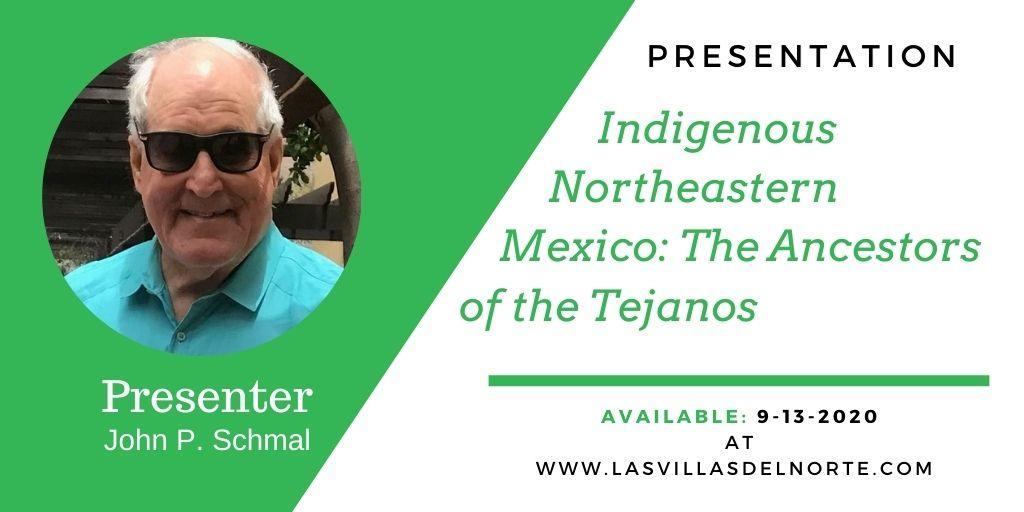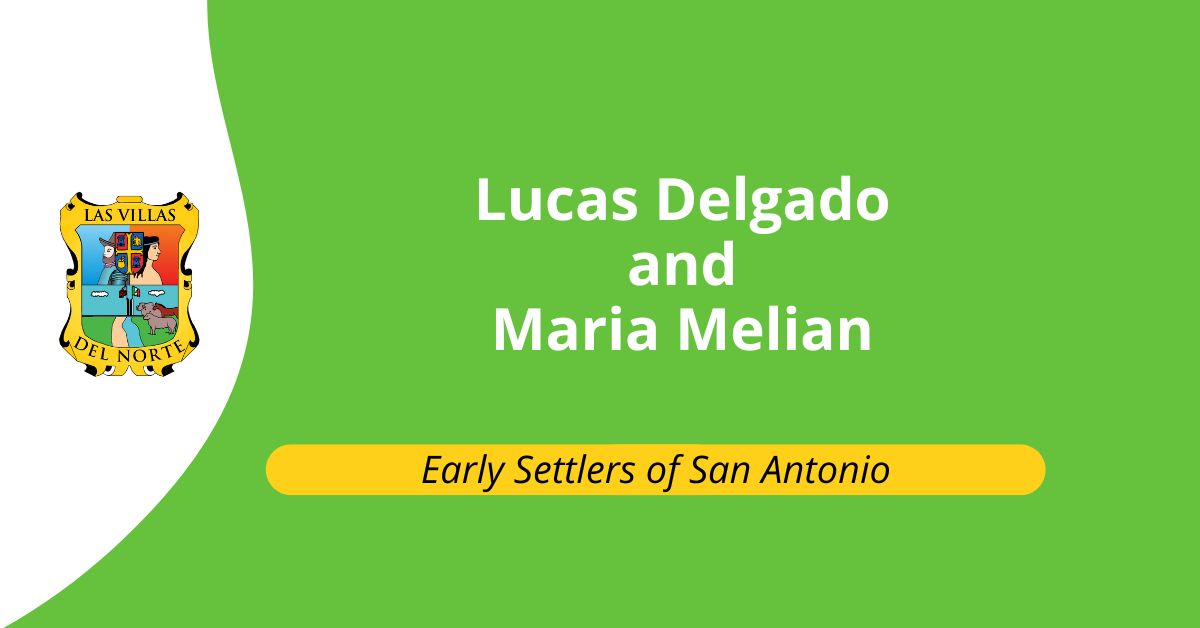Presentation Recap “Indigenous Northeastern Mexico: The Ancestors of the Tejanos”

Here is a short recap of the presentation "Indigenous Northeastern Mexico: The Ancestors of the Tejanos" and what you can expect from it. In this presentation, John Schmal discusses the native peoples who originally lived in the present-day states of Nuevo León, Tamaulipas and San Luis Potosí. Today, virtually all of the native tribes of Nuevo León and Tamaulipas have disappeared as “distinguishable cultural entities.” In their place, social and cultural assimilation created an unusual ethnic mix that epitomizes the people of this region. San Luis Potosí has also experienced its own brand of assimilation, which has been discussed in several publications, but the state still has a substantial population of indigenous speakers (over 10%). Together, the Spaniards who settled in this region and the Indian groups who had been there earlier represent the ancestors of many of today’s Tejanos. Their journey through the colonial period to the present-day will be discussed.
This presentation is already for viewing here: Indigenous Northeastern Mexico: The Ancestors of the Tejanos
The reason we invited John to do this presentation was because most of us with roots in Northeastern Mexico have indigenous ancestry.
Now let's talk about this presentation. Below is the outline of the video and what you can expect to learn.
Here is the Outline of the Video and What to Expect
Indigenous Northeastern Mexico: A Summary (0:10) - John starts with his observations and findings about the various indigenous groups that once occupied this region. Groups that have disappeared or were assimilated to the Spanish culture.
Geography of the Northeastern States (6:34) - In this section he explains how the geography of the country determined the settling of Northeastern Mexico by the Spaniards. This also provides us with the type of area that our indigenous ancestors lived on.
Indigenous Tamaulipas (10:56) - In this section you will learn about many of the indigenous groups that lived in what is nowadays Tamaulipas.
Nuevo Leon and San Luis Potosi at Contact (16:50) - In this section John shares with us his knowledge on the various indigenous tribes that lived in Nuevo Leona and San Luis Potosi when the Spaniards started to settle both areas. You will also learn about the Tlaxcaltecan settlements in the North of Mexico.
The Escandon Expedition Begins (23:29) - In this section you will learn about the settling of El Nuevo Santander and how it affected many indigenous groups that lived in Tamaulipas. He also explains how many groups joined the Spaniards and Missions.
The Northern Mayans and Census Data (33:30) - In this section you will learn about the Mayans that lived in what is now Tamaulipas and we also learned that their descendants are still living in the same area. You also learn the percentages of Mexican that speak indigenous languages.
The Indigenous Mexico Website (39.48) - In this final section you will learn about johns website focused solely on indigenous research for Mexico.
This presentation is over 40 minutes and highly recommend it for anyone with roots in Northeastern Mexico
Watch This Presentation Now
If you are a member of Las Villas del Norte just click on the button below to be taken to the page where you can watch the presentation.
Not a Member Yet?
Join Las Villas del Norte today and you can watch this presentation online today, plus many more. You will also get our eBook "Las Villas del Norte, The 1757 Censuses of Laredo, Dolores, Revilla, Mier, Camargo, and Reynosa", plus the e-versions of our Journals, including a ton of other great resources to help you in your genealogy.
Any questions, concerns, or suggestions please let us know below in the comment area of this post. Don't forget to join our mailing list using the box to your right hand side






Responses